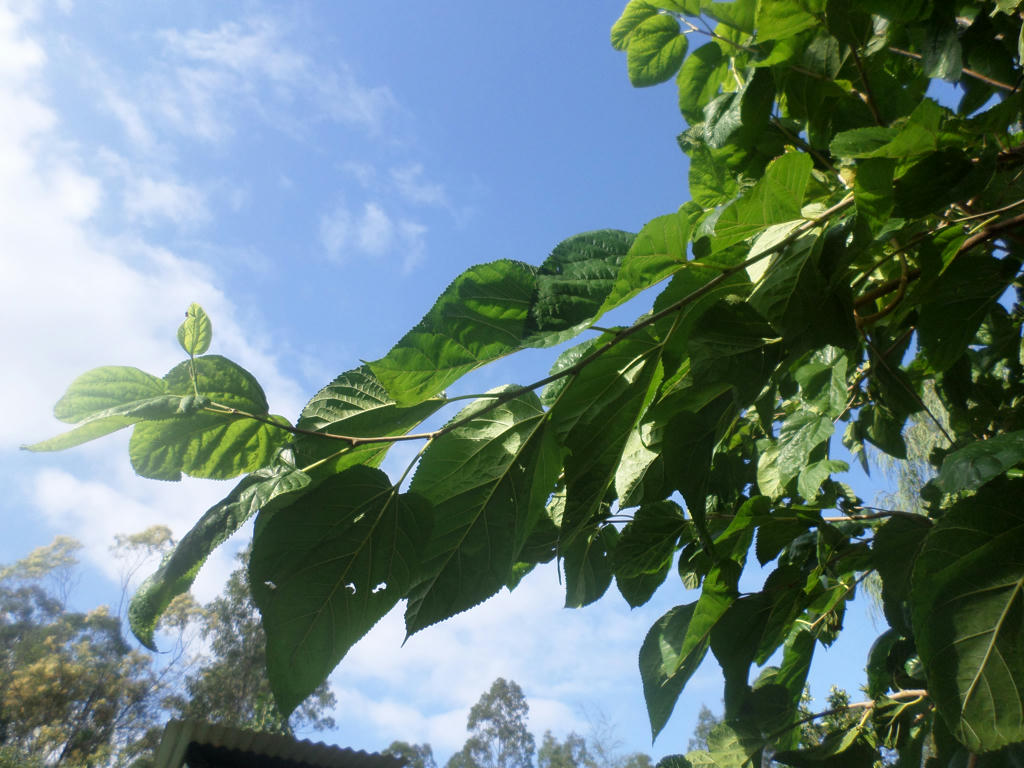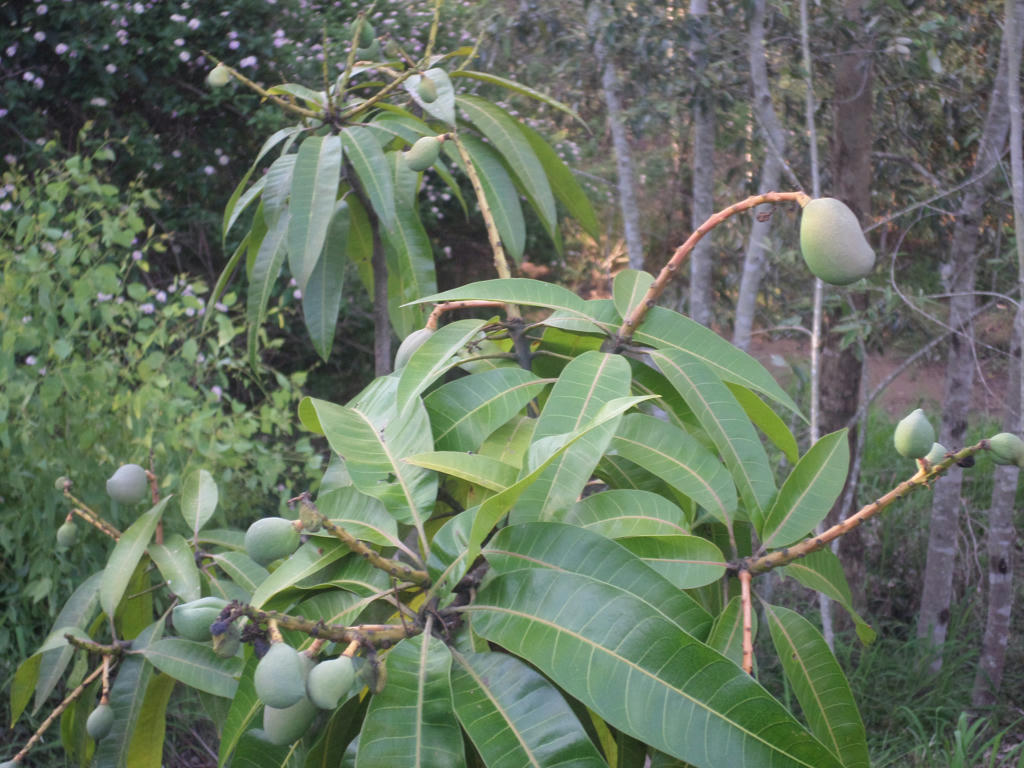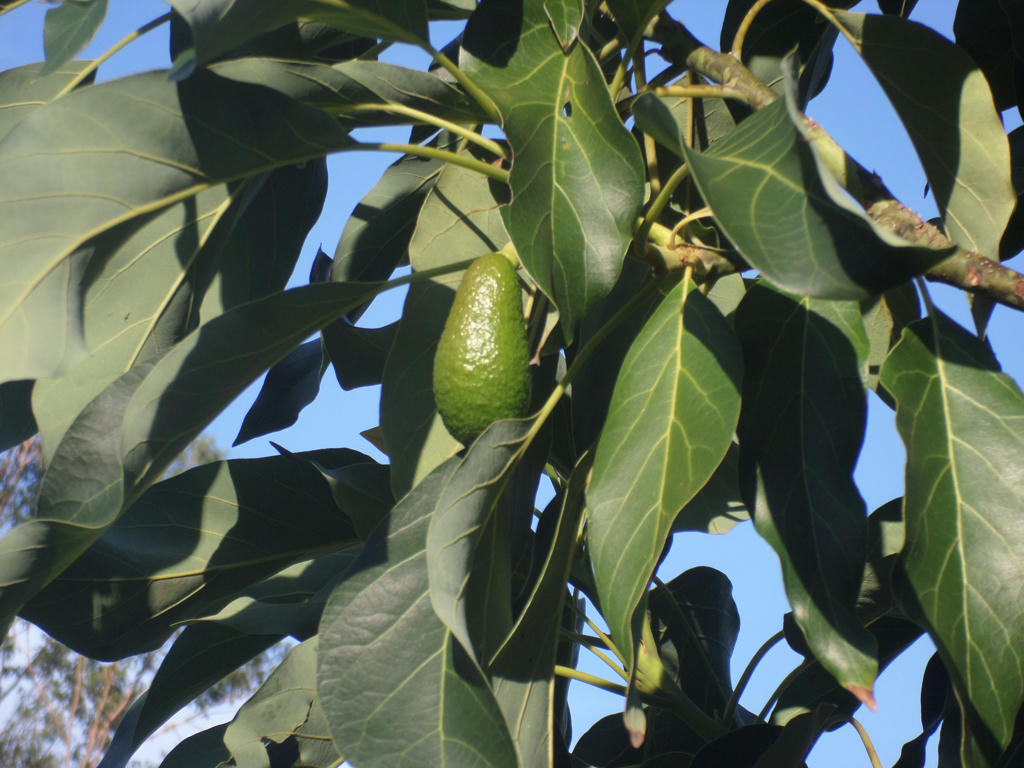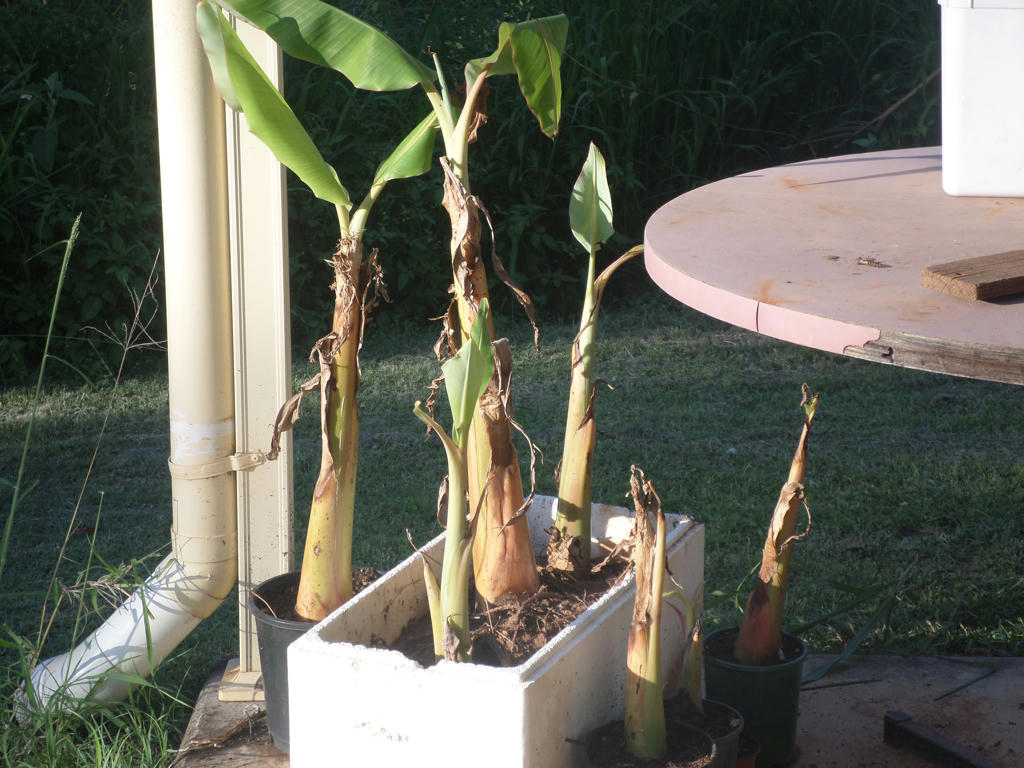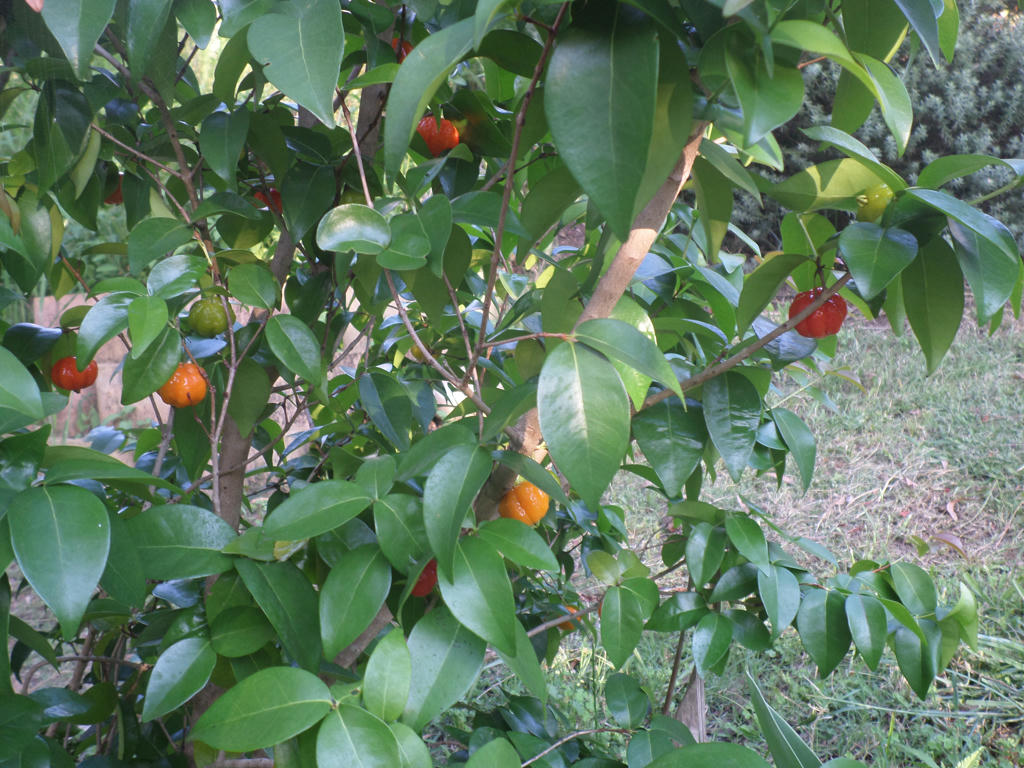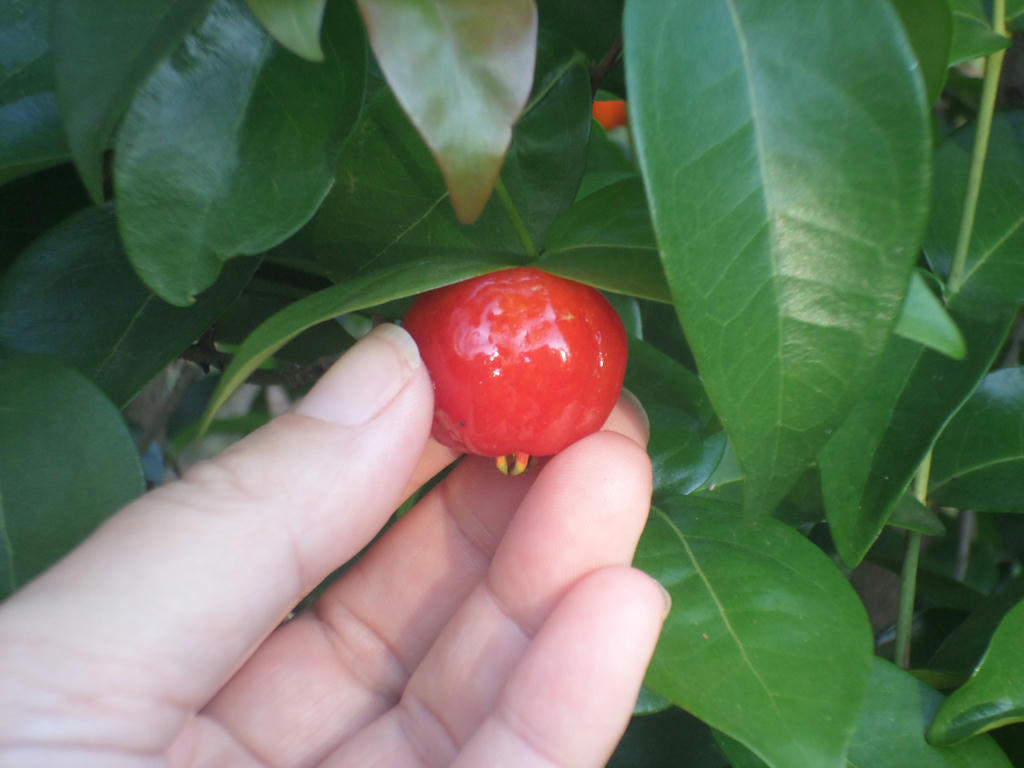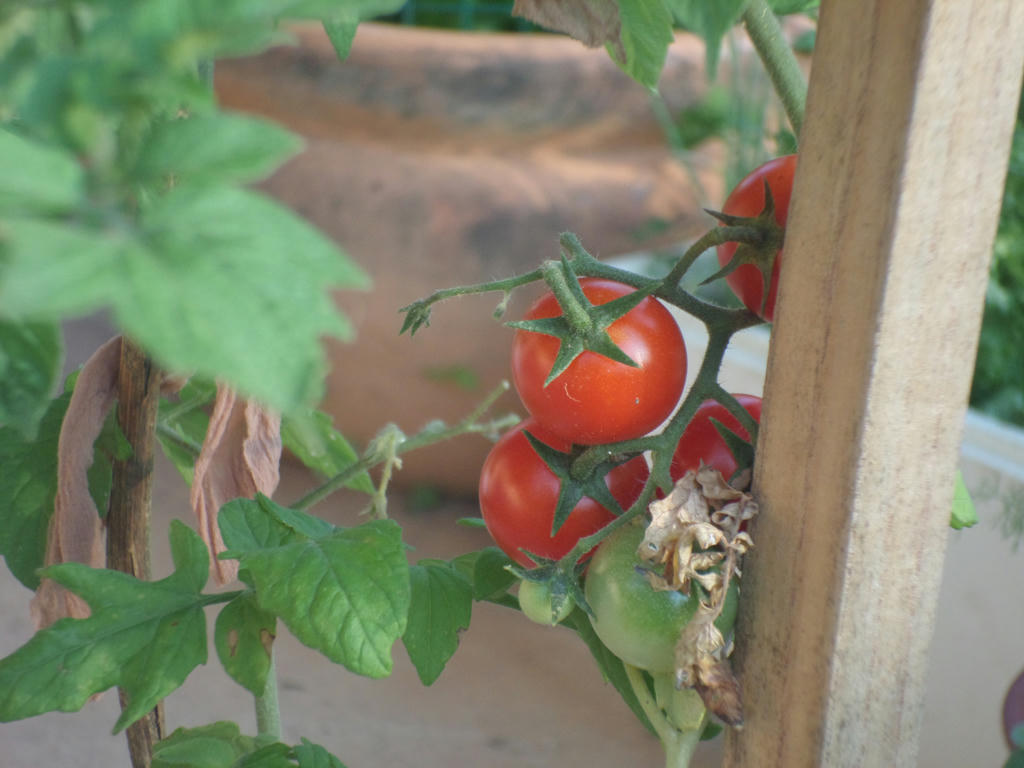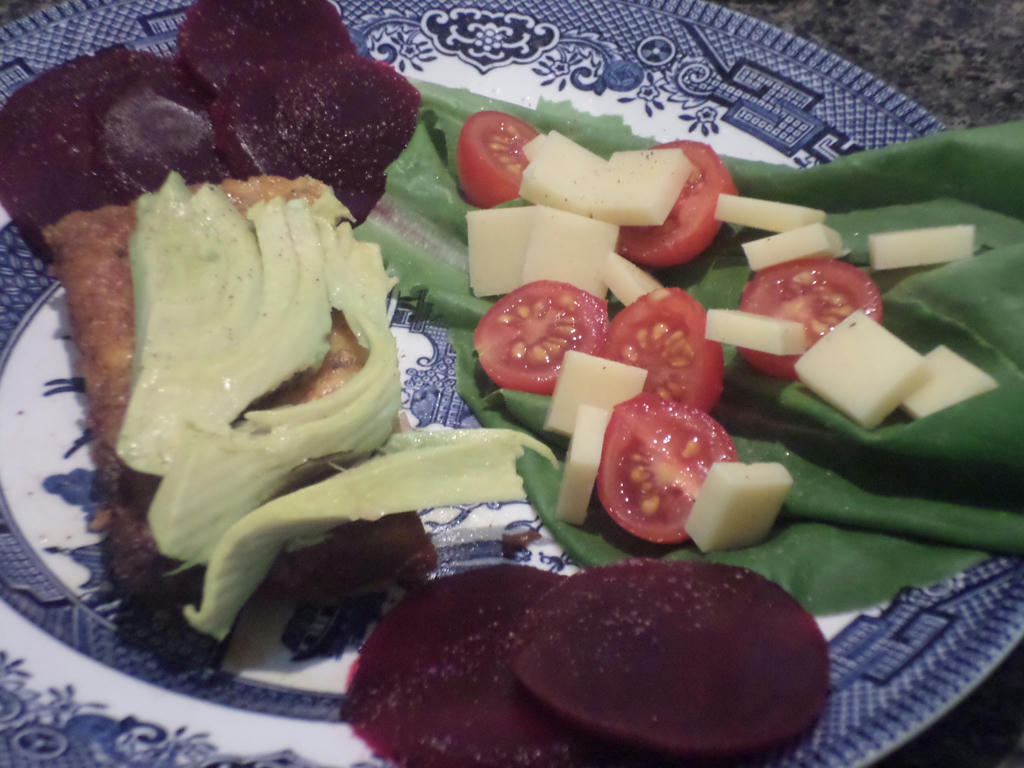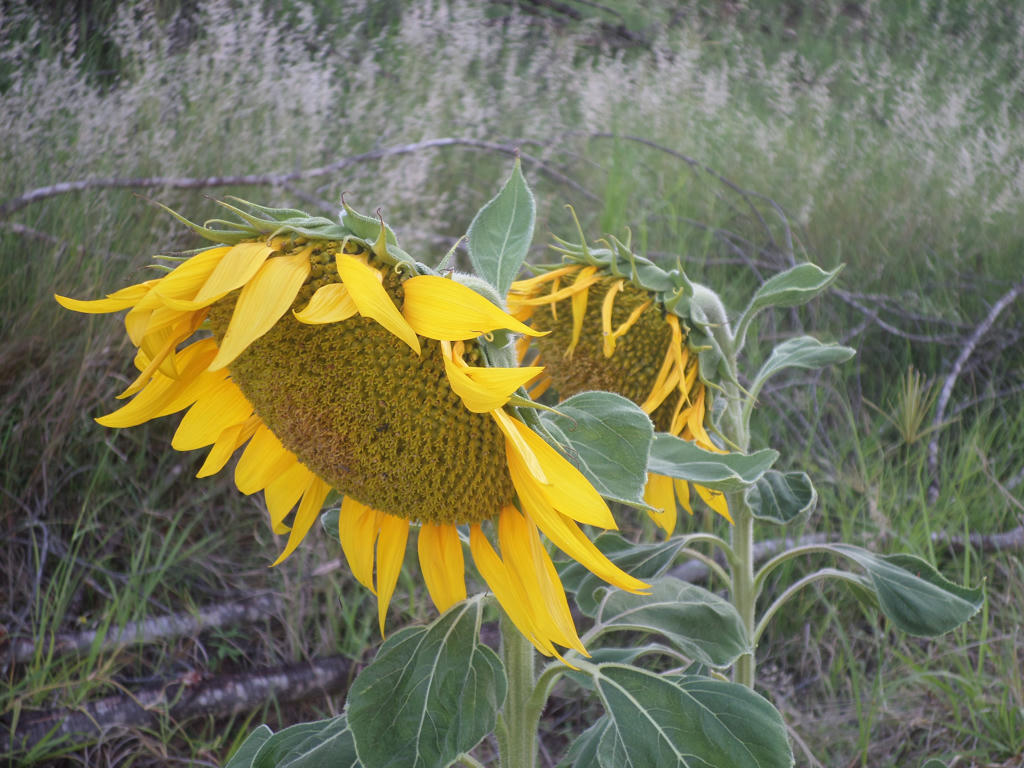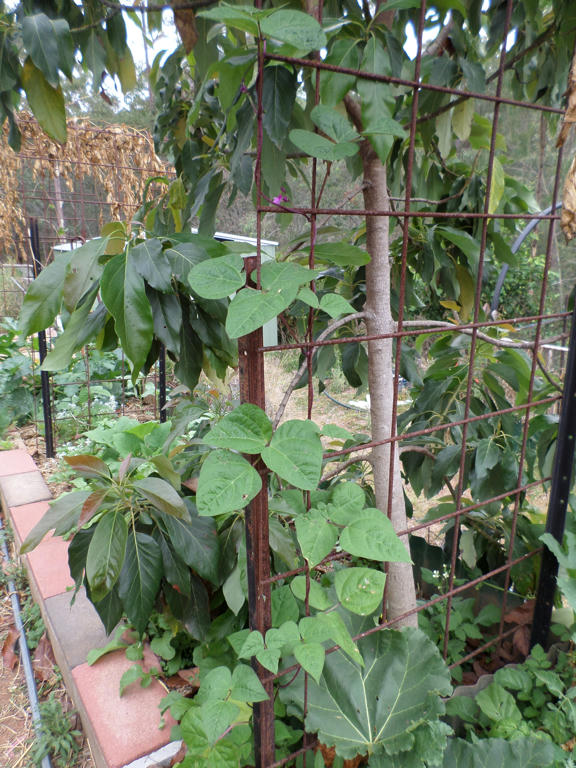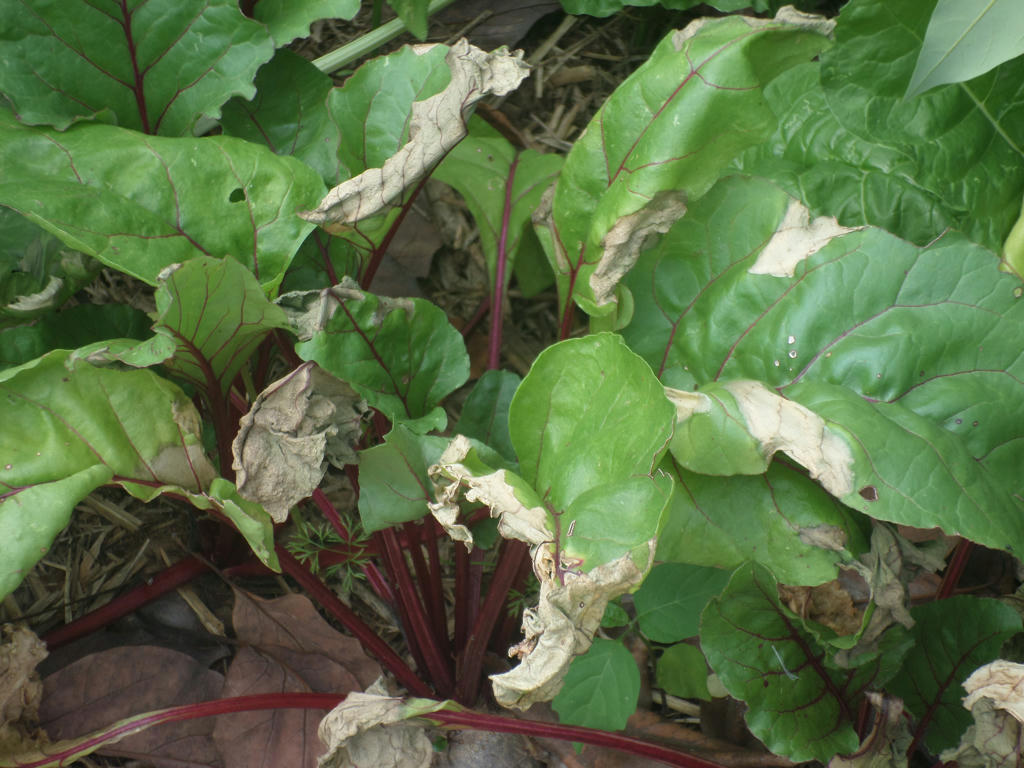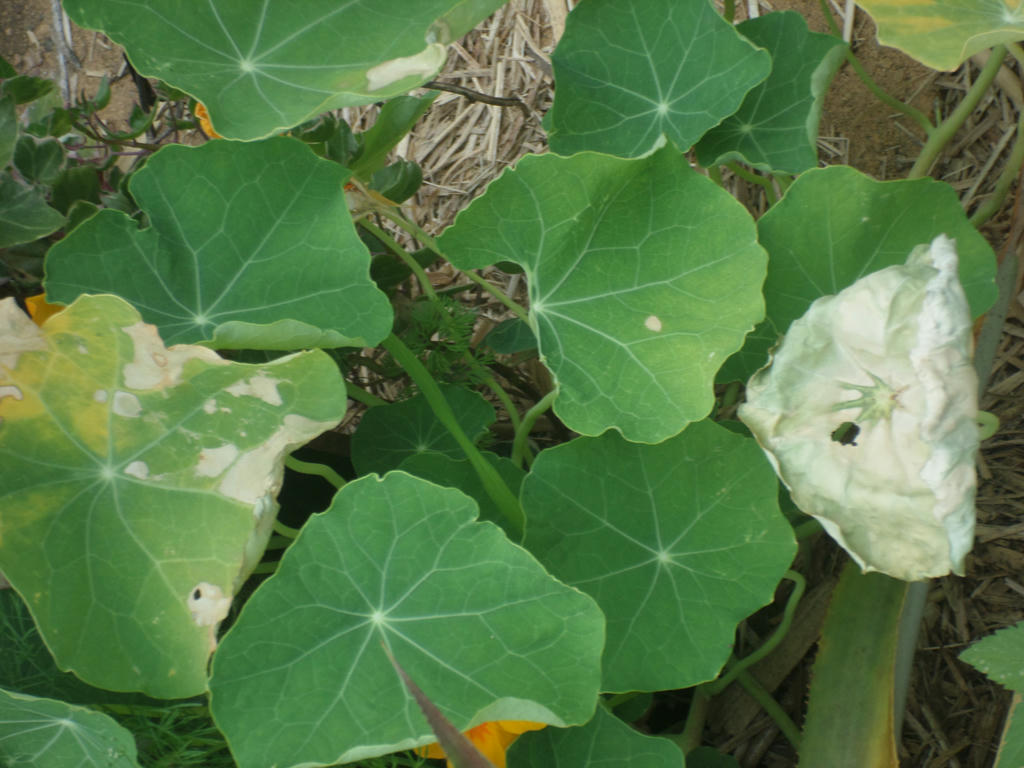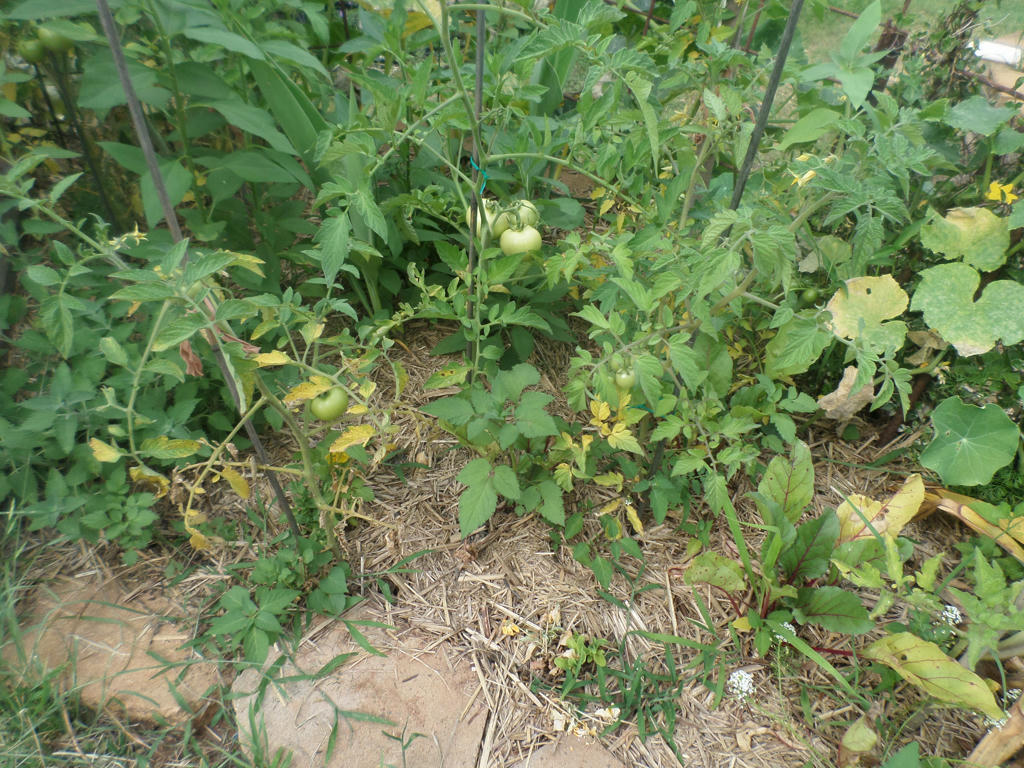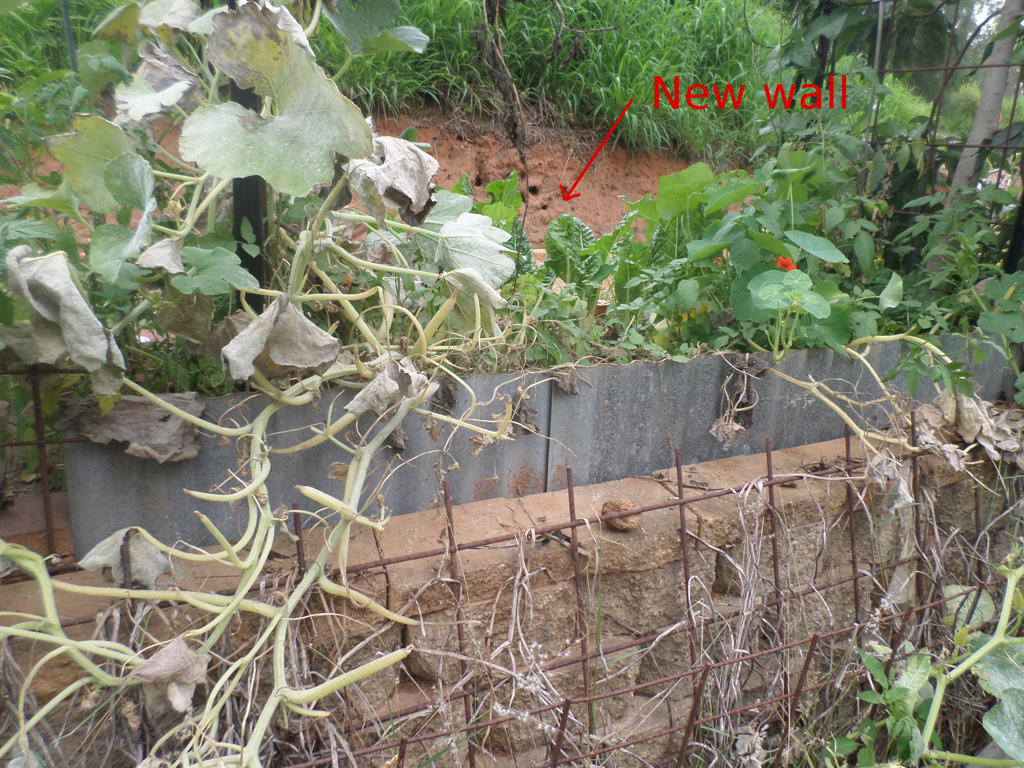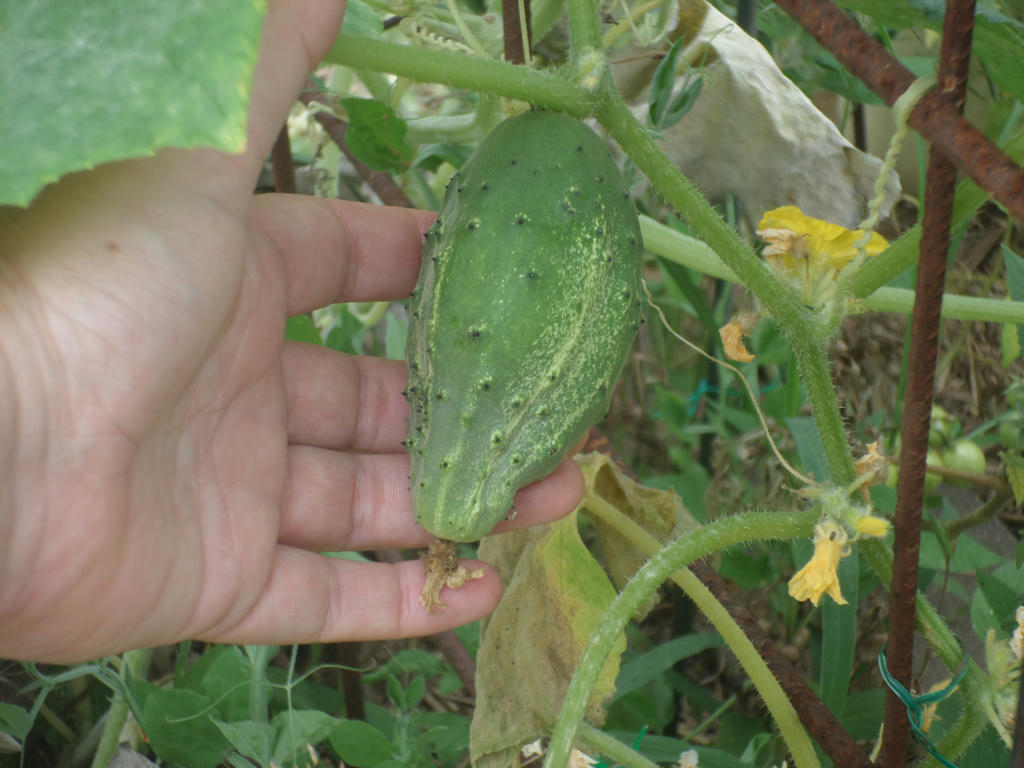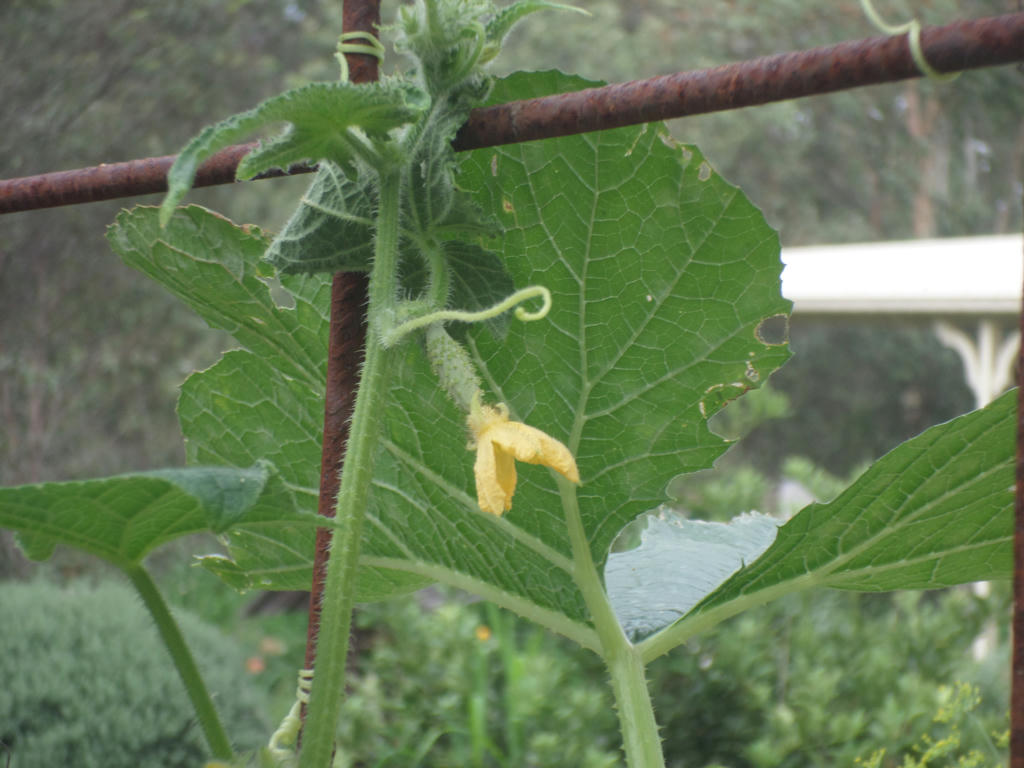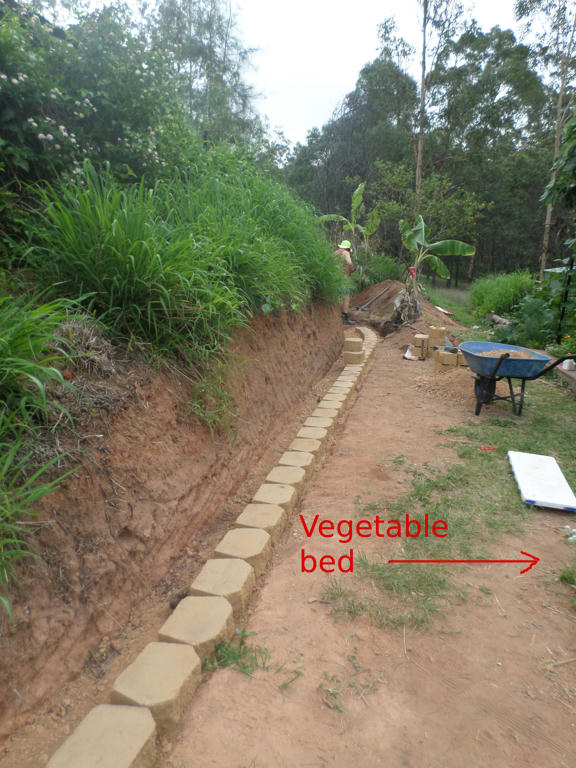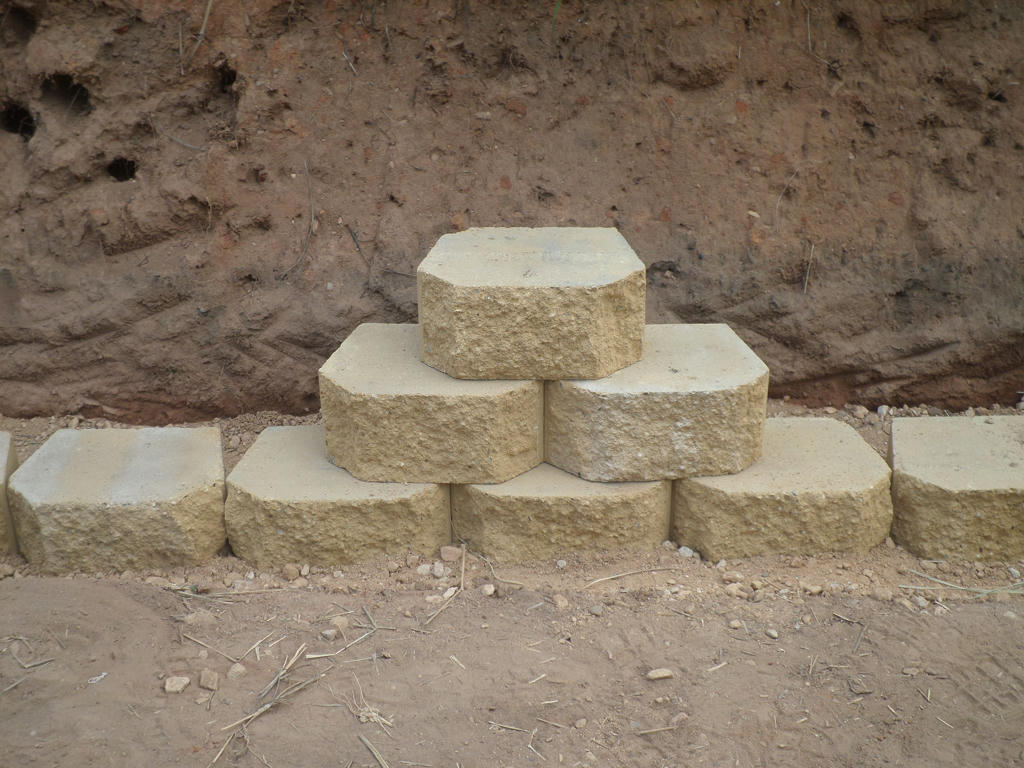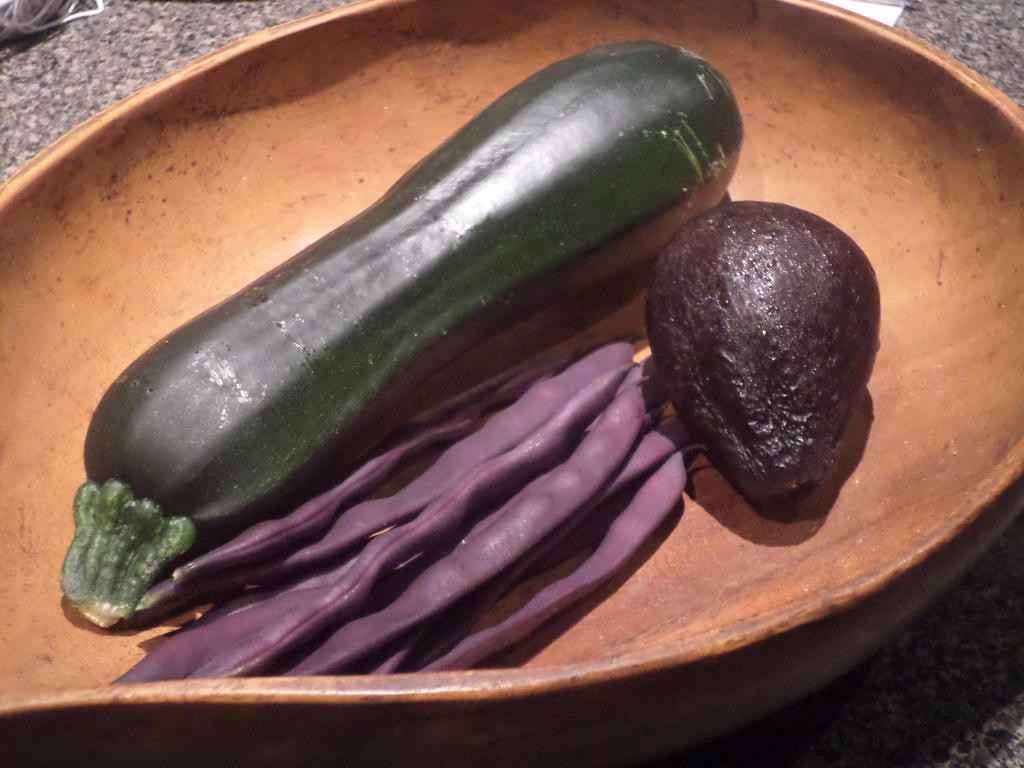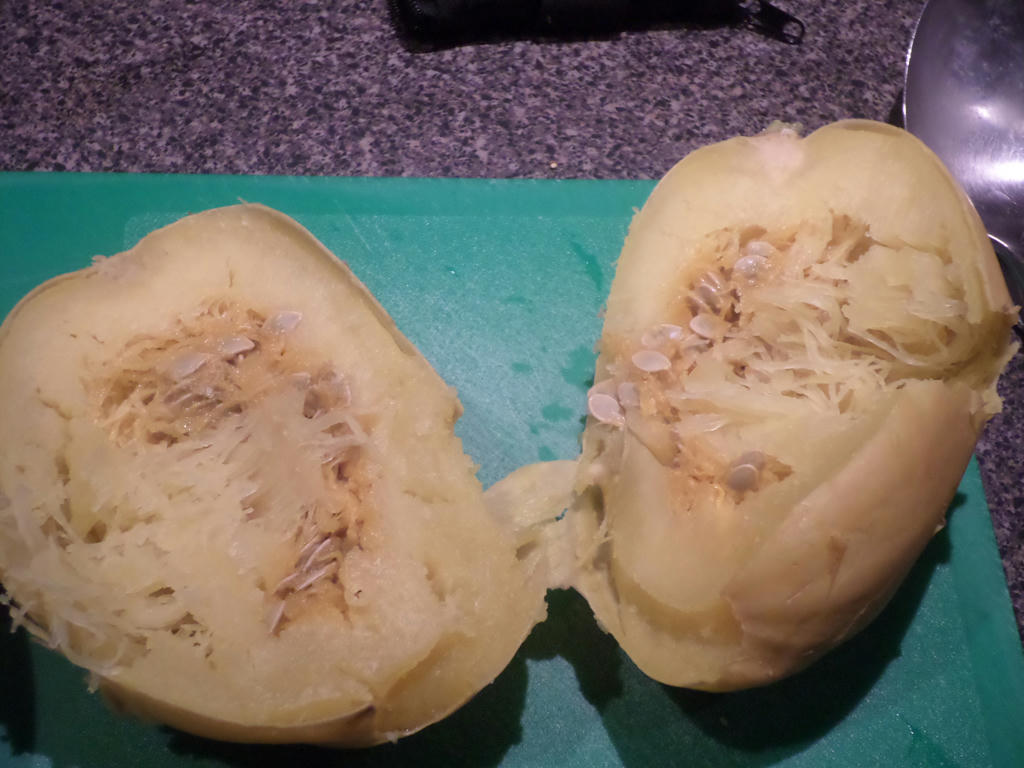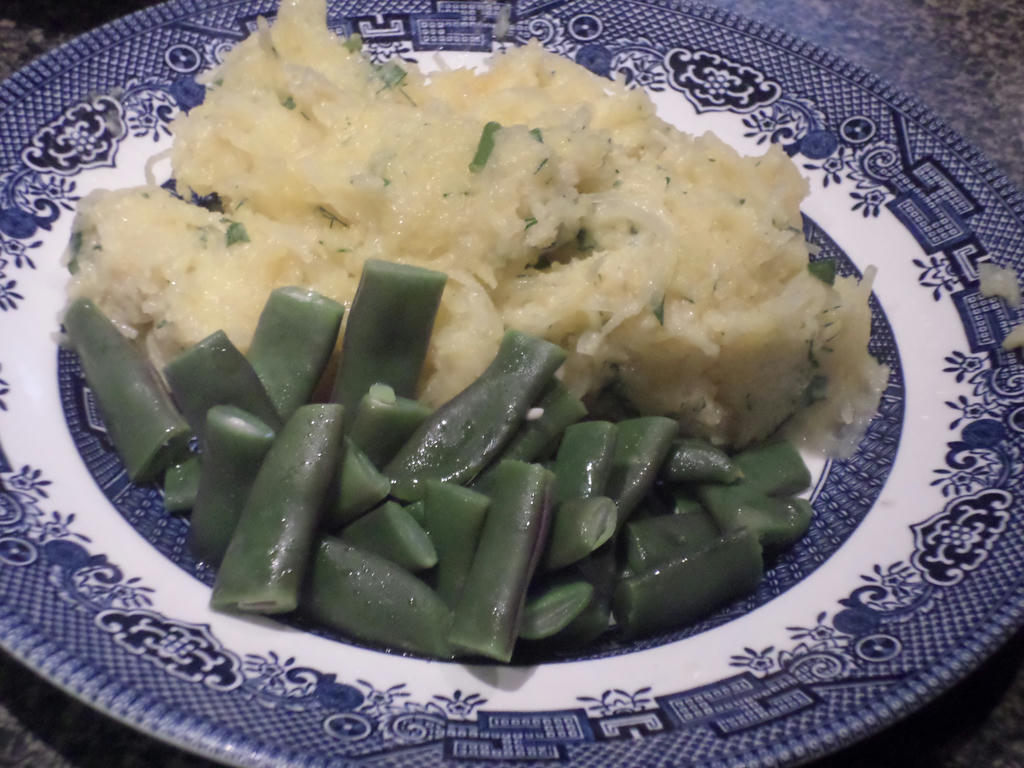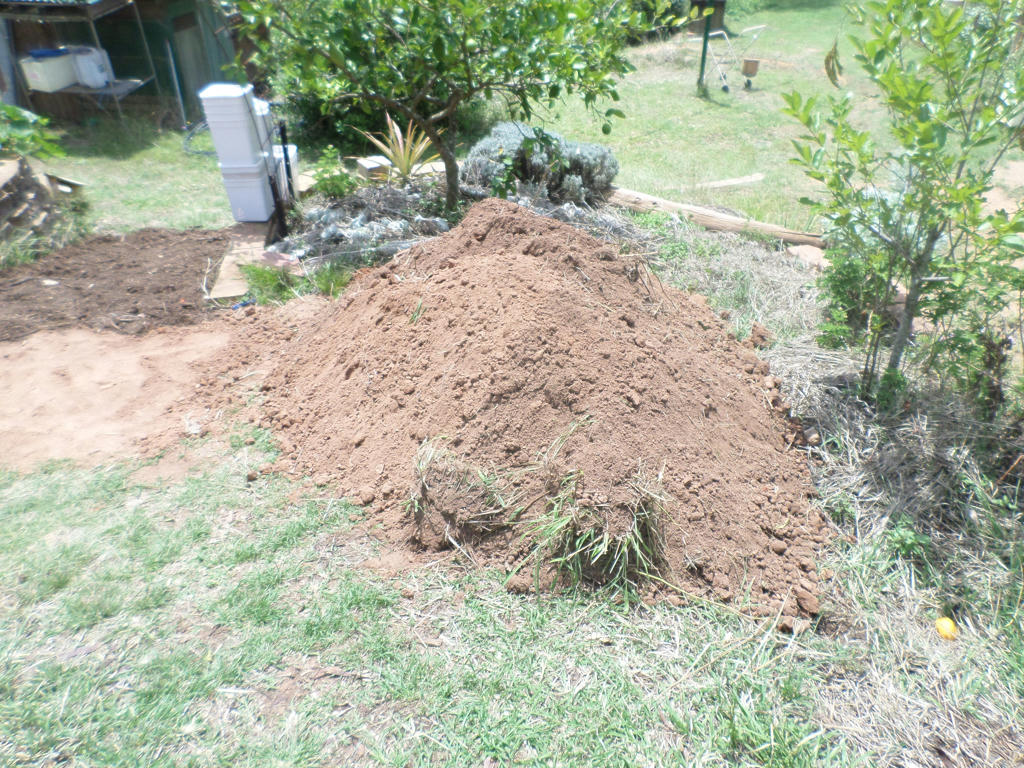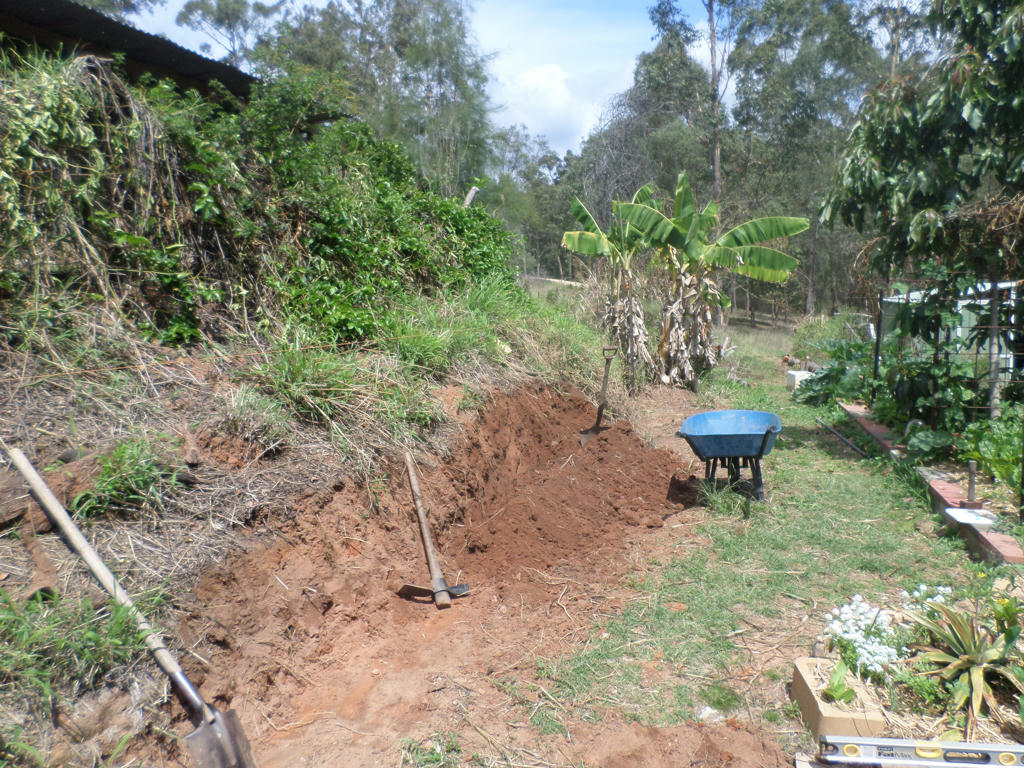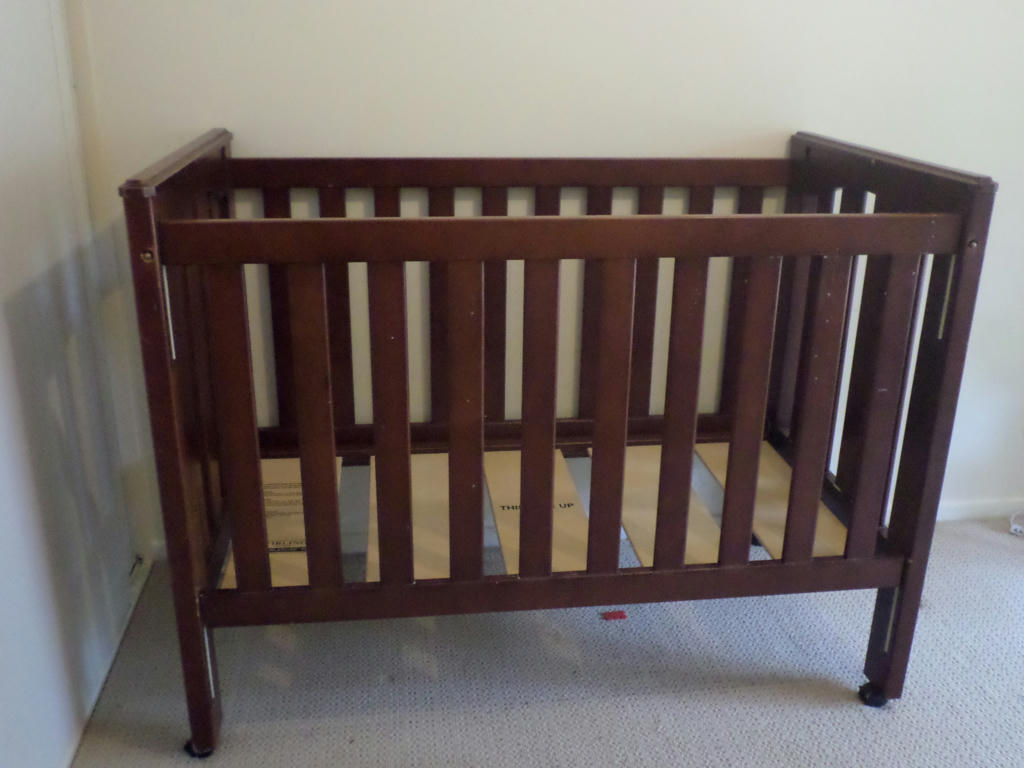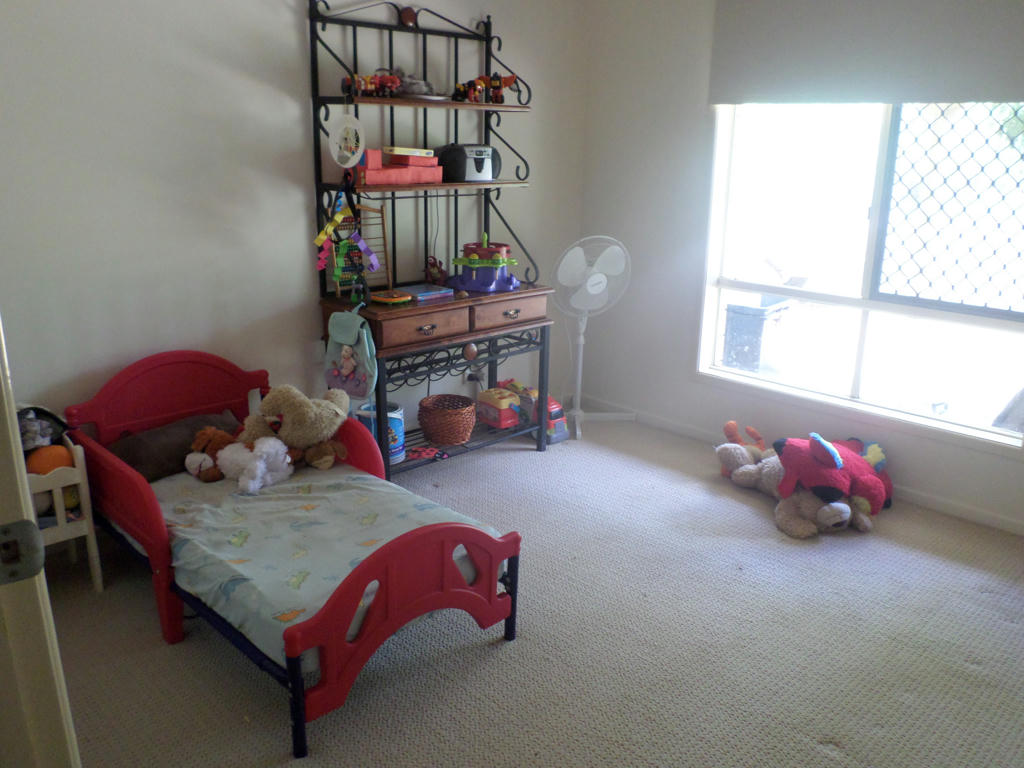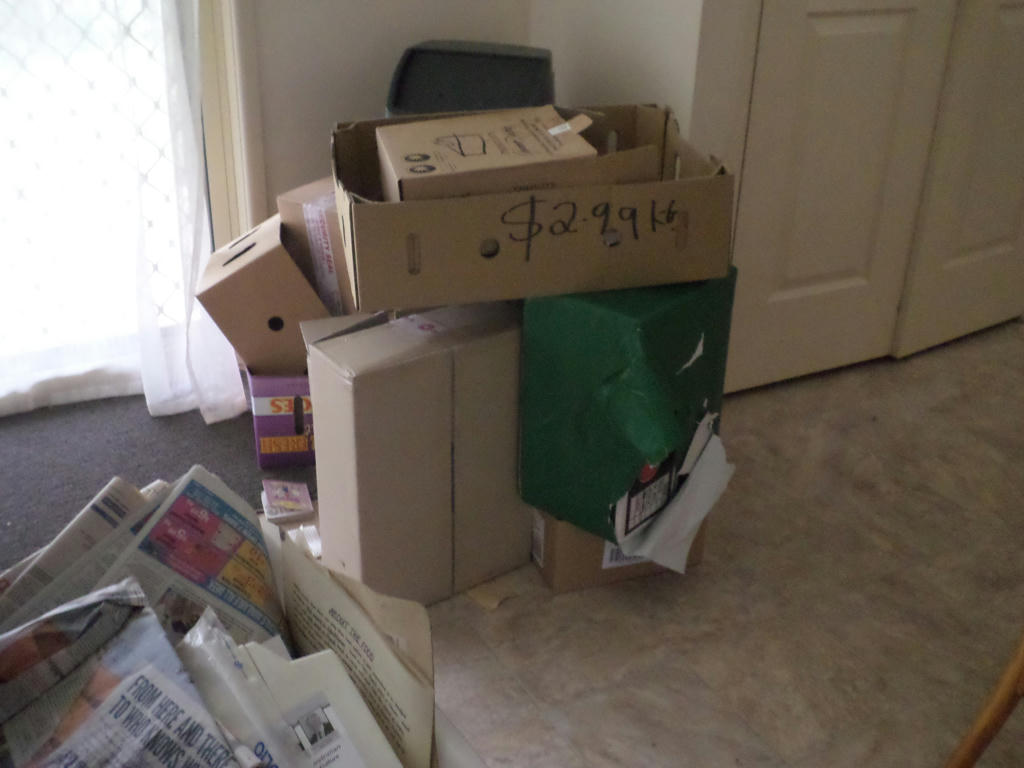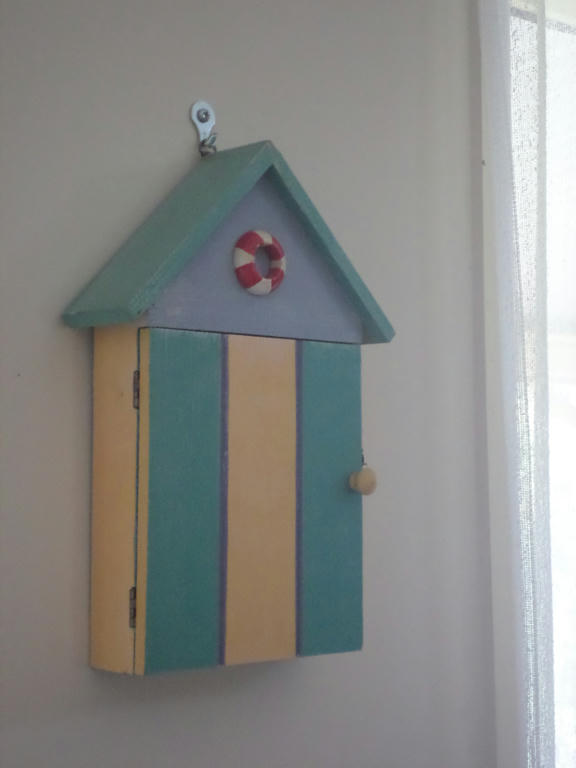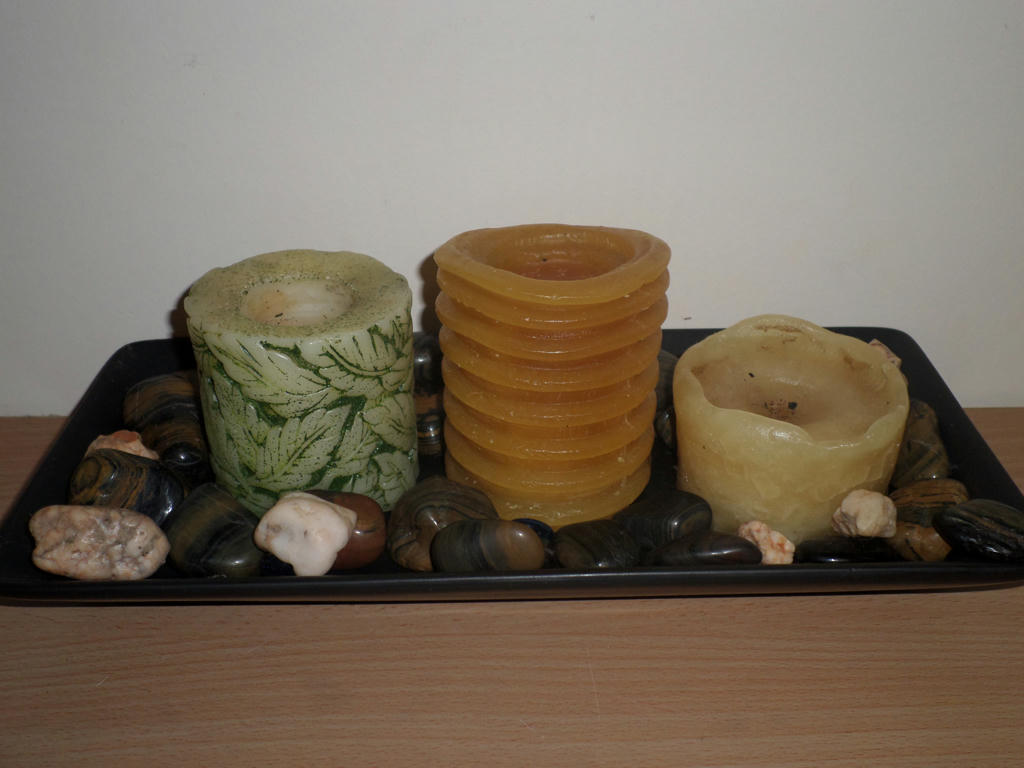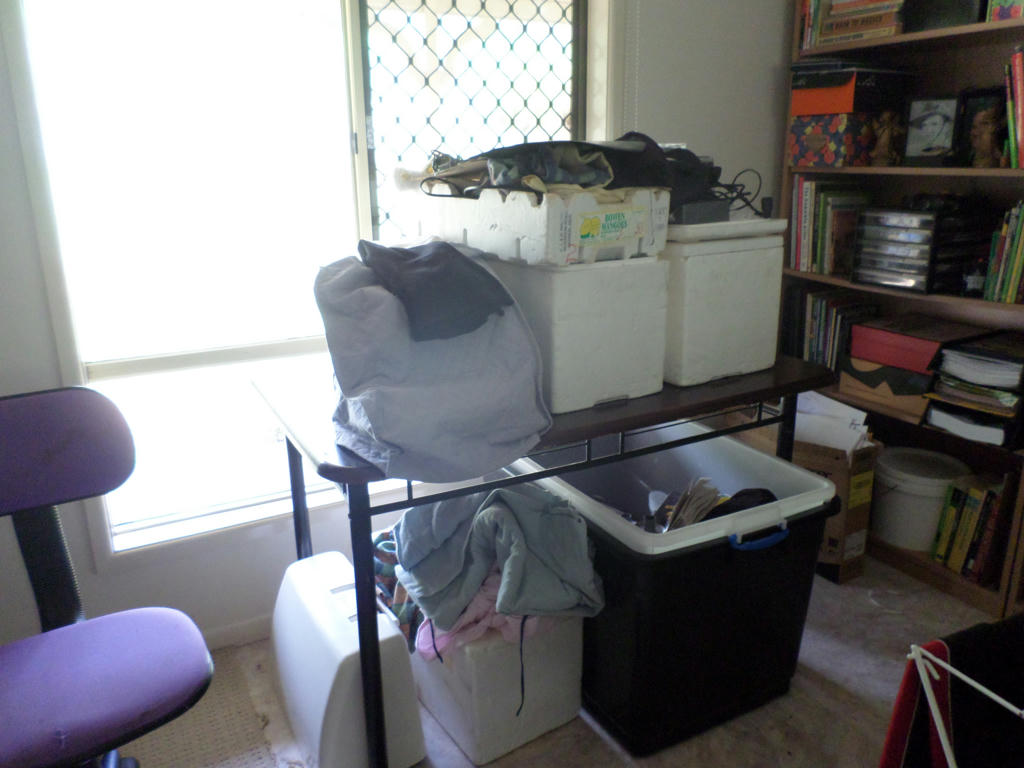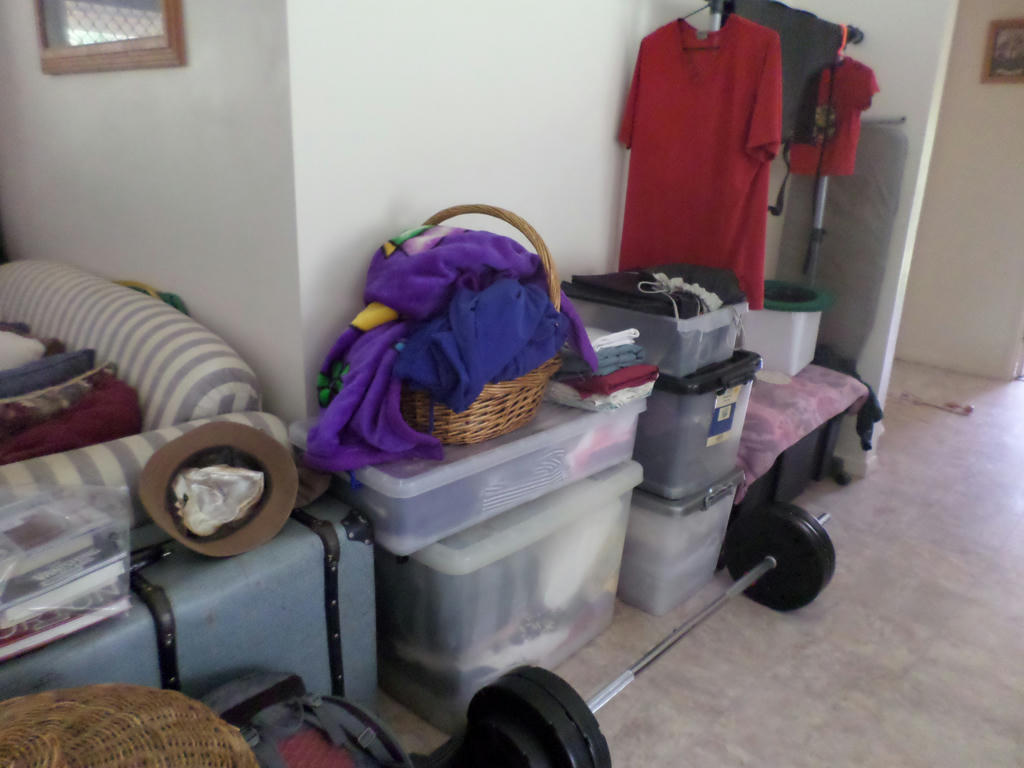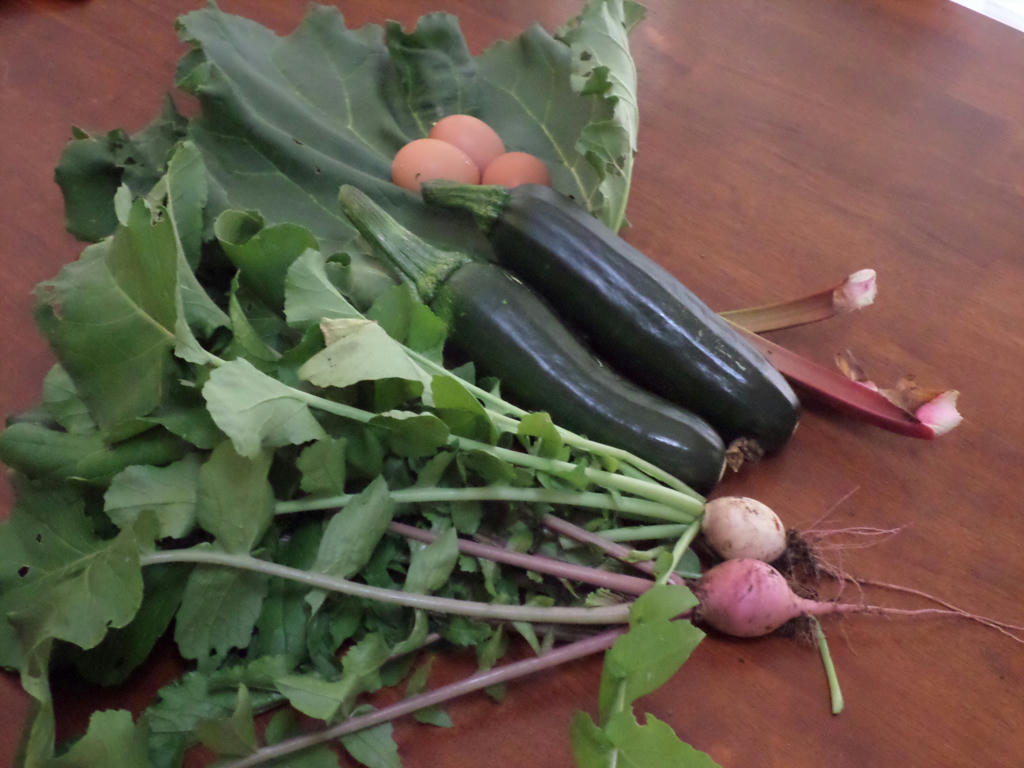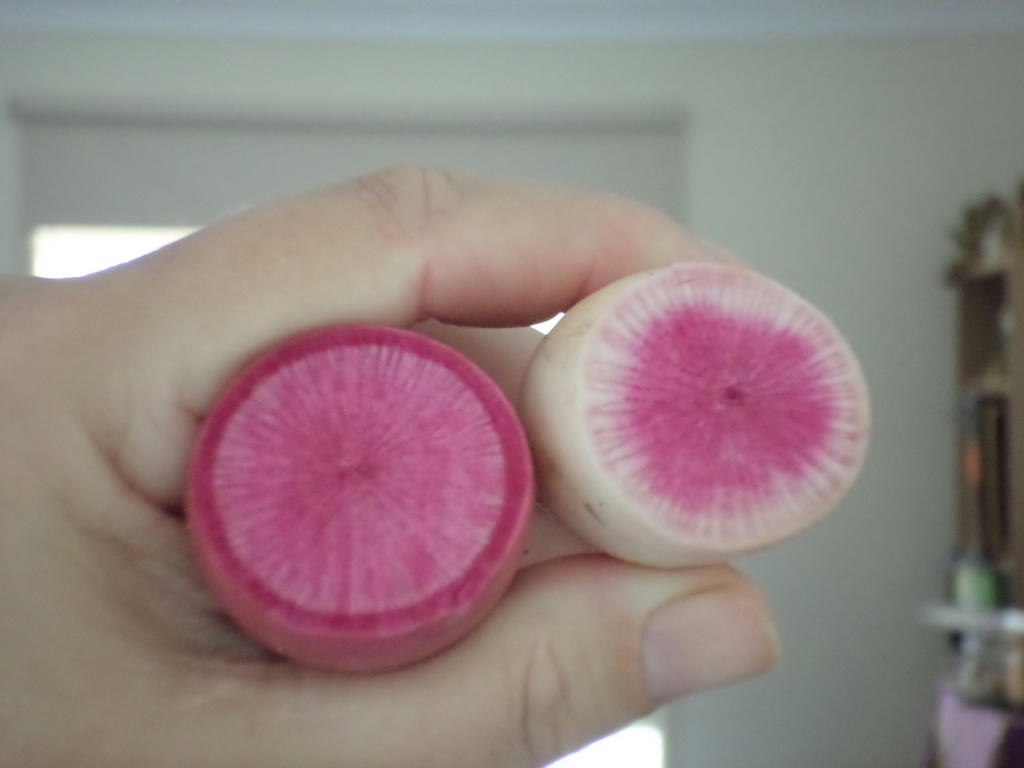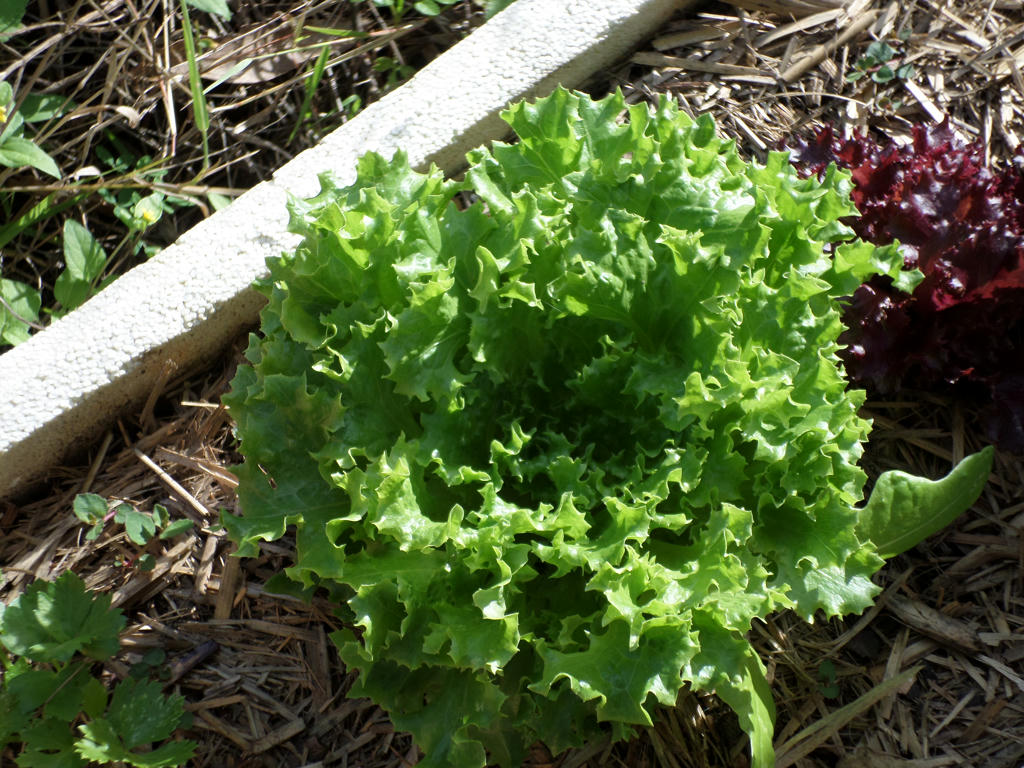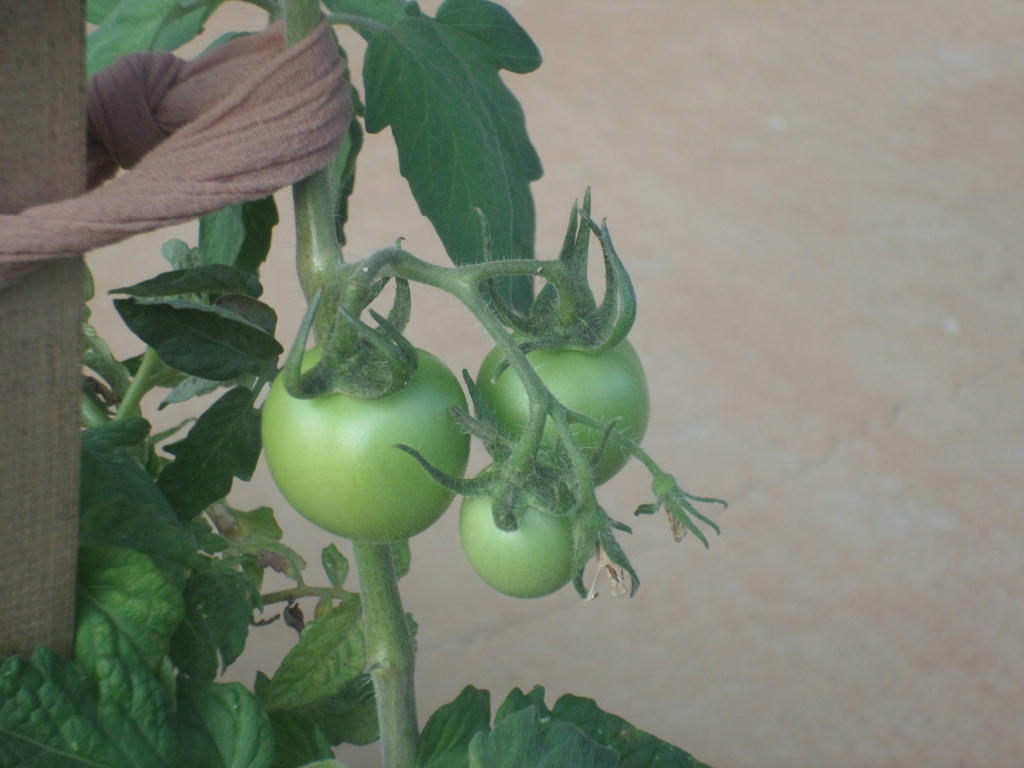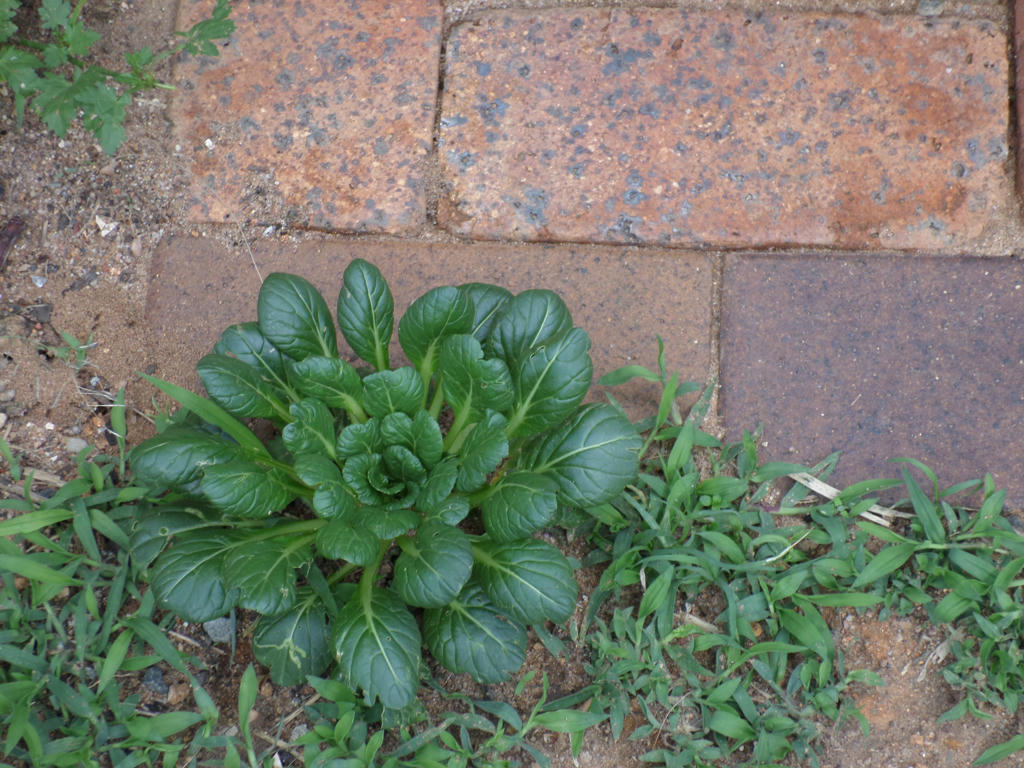Mulberry
By far, the mulberry was the most prolific grower and producer, but the birds soon found out, and we never got a harvest - just the occasional one or two. With kids, these never went far! So I've successfully propagated more trees from the existing ones, this year, so we might actually get some in years to come.
Image taken 2011 ~ planted 2009
Our mango tree is about six years old now, and purchased from the local nursery. It was most likely grown from seed, and why it's taking so long to produce. It didn't help that we had it growing in shade, which slowed its development down. With the addition of a new swale recently, and the removal of some weed trees, it's put on quite a lot of fruit this season.
Kensington Pride Mango
It's still not a very big tree, but we don't mind, as it means we can still reach the fruit! I'll have to try and bag the fruit, as the fruit fly will make a mess of them. The very favourable rain this year, has aided in the heavy bearing, and more importantly, helping the tree hold onto the fruit.
Avocado - likely, Hass
Our avocado tree is still holding onto three fruit, which will be ready to eat in another five to six months time. It's looking very much like a Hass to me. Because we love avocado, I'm growing more from seed, of a different variety. Some even from avocados we were gifted recently too. Which looks like the Reed variety to me. I'm just going to put them in the ground and let them surprise me.
Some people suggest, growing fruit trees from seed can be variable. I've had three grafted avocado trees I purchased however, die in short order, so seed is cheaper and I've yet to have a seedling die. They take longer to produce than a grafted variety, but at least they survive. If you've got limited space though and can spoil them, grafted trees may well suit your situation better. You'll definitely get fruit sooner.
Dwarf Ducasse
We probably won't get bananas this year, on account we had to chop many of them back, to build a nearby retaining wall. We got six suckers from them however, with a few left in the original position. We'll try planting the removed ones in a different location, lower down in the gully, so they'll get more access to water.
A different kind of cherry
What we have been enjoying as recently as this morning, however, is the Brazilian cherry. You can see from above, its producing quite a lot of fruit. Two adults and one child, were able to graze this tree and enjoy the slightly tart flavour. It was very juicy and tasting quite like an extremely sweet capsicum (pepper), is the best way to describe it.
Ready to eat
The yellow to orange fruit, are under ripe. They have to be a lovely red colour to enjoy them the most - as they will be less tart. They're quite a big fruit, but its a little deceptive, as the single pip inside, is big. But you do get a reasonable amount of flesh. I like them, and glad we planted this tree.
Planted late 2010
It's come a long way since it first went into the ground. What I love about the Brazillian cherry the most, is how tough it's been. Having to hang on through our very dry and hot periods, may have dwarfed its size a little, but the nearby swale, has helped it along this year too. Lovely, juicy, less tart fruit. A good swale, in the right location, can help your fruit trees enormously.
If you have access to a lot more moisture, and live near bushland, you may not want to plant this variety. As birds can spread the seed and you may have a problem stopping its spread outside your boundary. It's never been a problem here, as I've noticed the seedlings which I have tried to propagate, are very vulnerable to heat and moisture stress. That's why I don't see them popping up naturally. So best keeping this tree for harsher environments, or if you live in the suburbs.
Wee tomatoes
I only wanted to showcase our fruit trees in this post, but I couldn't let our cherry tomatoes escape, since they are incredibly delicious and red at the moment! We even had some for lunch today...
Store bought beetroot and cheese ~
the rest was home grown
We grew the tomatoes and lettuce ourselves, the avocado was given to us and the chickens produced the eggs to make the frittata. We feed our chickens weeds, bugs and food scraps, and they give us eggs in return.
I have to say though, fresh cherry tomatoes from the garden, are nothing like store bought ones. They're more sweet than bitter and taste like sunshine. I'm sure the chickens would agree, if we dared share them. Maybe later in the season, when we can't keep up with them.
Sunfola variety
And just because I love them - sunflowers! The native bees and a few European ones, have been going berserk with them lately. These were planted on the sweet potato bed recently. While the sweet potatoes don't need pollination, sunflowers are an excellent food attractant to bees. Therefore, they make good companions to fruit trees.
Beans borrowed the tree
once they ran out of trellis
Sunflowers in the sweet potatoes, and beans in the avocado tree - I do like to shake things up in the garden. If you find yourself growing in hostile conditions, try diversity planting too. You'll find like good neighbours, they get through establishing better, together. What's more, you get increased value for any watering you do manually, or the rain gives naturally, because your plants are located closer together.
Although our trees haven't amazed us with prolific growth (apart from the mulberries) we have found they do plod along, if they are of hardy stock. We just had to keep adding more fruit trees, as we could. In the tough department, we've had a lot more success with seedlings than grafted varieties. Living on limited tank water, we just cannot spoil our fruit trees. So die-hard and cost effective seedlings, were an incredible resource to us - and still are.
I must confess though, I was extremely disappointed with our fruit trees when nothing would fruit. Nothing! For all the effort we put into them, we seemed to get nothing in return. Not like chickens! But fruit trees do eventually get there, and can be prolific in their own time. They are a crop that takes ages, but once they get going, you'll be inundated.
I can't wait for that day! But we're doing better every year. :)

